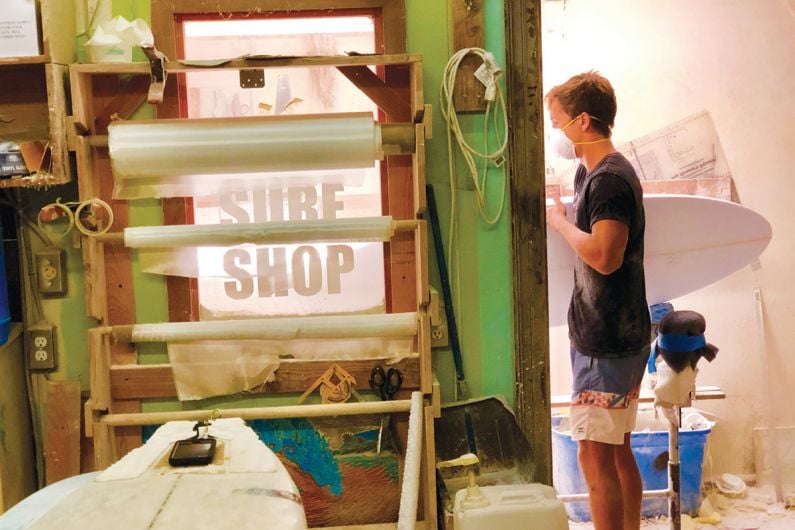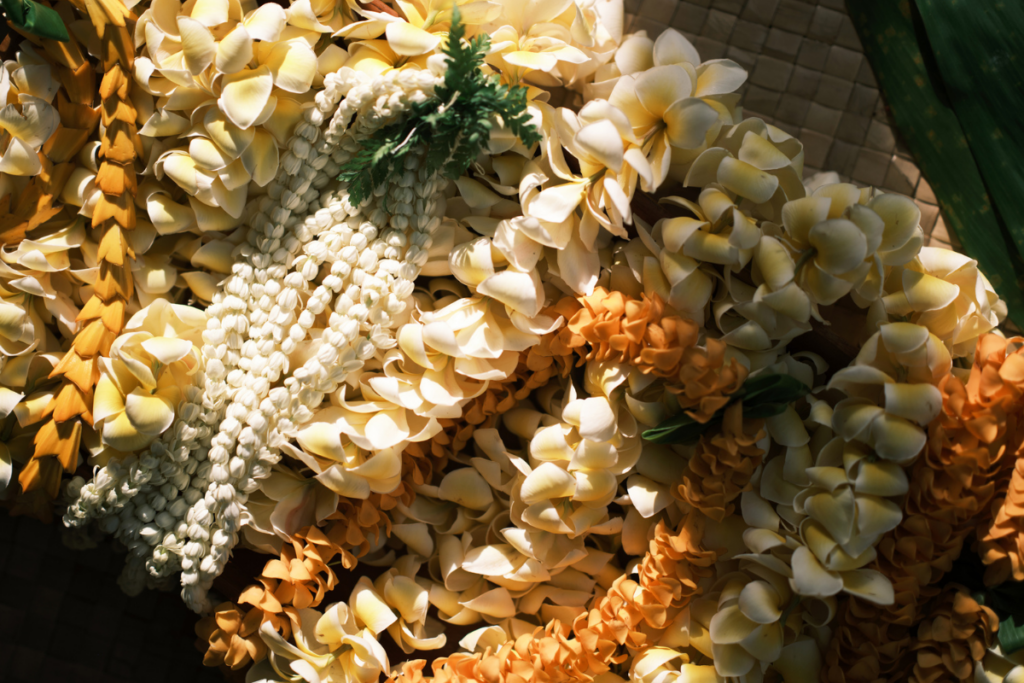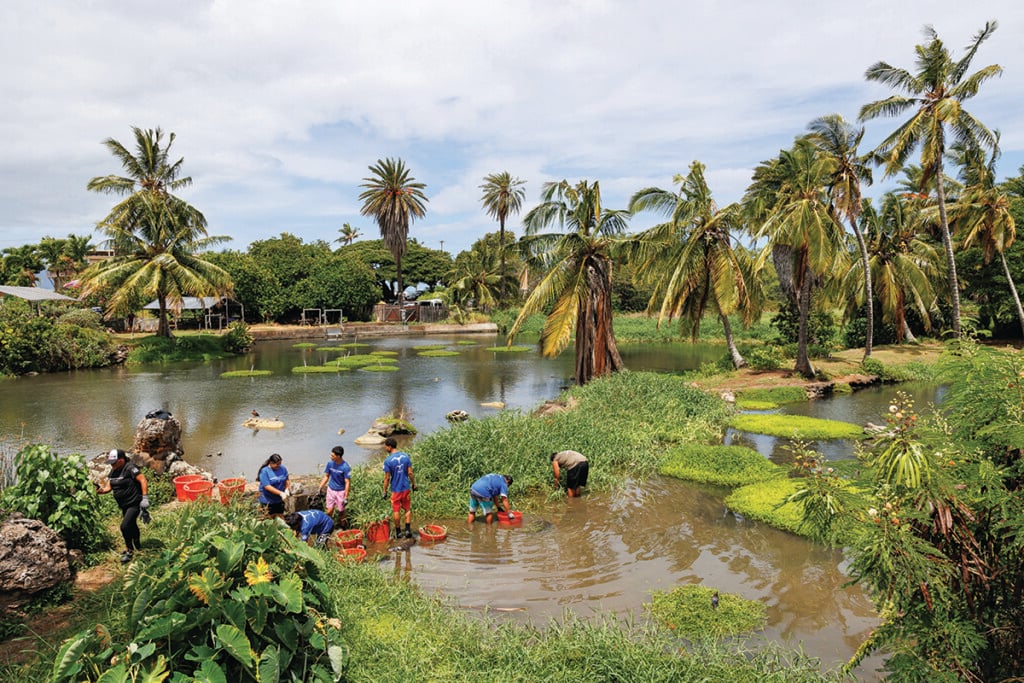Taking Shape
Late last year, I got the itch to shape a surfboard, by hand. This was my experience.

I’m not much of a craftsman.
I can count on one hand the number of times I’ve used tools and the only thing I’ve ever put together was my Walmart futon. But late last year, I got the itch to shape a surfboard, by hand. There was an allure there, to ride the waves on something I crafted entirely on my own, while the idea of learning more about the hydrodynamics of how a surfboard uses the motion of the ocean also caught my attention. After buying a polyurethane blank, which is the foamlike material commonly used in the production of surfboards, and a gaggle of tools, such as sanding blocks, devices to take measurements and an assortment of sharp, cutting instruments, I was ready to begin.
I had the idea in my mind that I was going to complete this board in one go. I rushed to the quiet streets of Wahiawa, where my friend’s shaping bay is located. A cluttered room filled with electric planers and strewn about foam scraps, surrounded by walls coated in polyurethane dust, he had converted his garage to pursue the craft of shaping surfboards himself, and I was grateful that he was letting me borrow his space. With an optimistic vision of what I wanted to make fresh in my mind, I attempted to complete my first surfboard in one eight-hour stretch. The result was a board a full foot shorter than my original intent and with a shape so misconstrued and jagged that it wouldn’t be worth the glassing cost.
Fortunately, I learn from my mistakes. After buying another blank, I took my time whittling this board down. A shaper friend gave me sage advice before I started. “Don’t move on to the next step until you’re absolutely done with what you’re working on,” referring to the steps in surfboard shaping, such as planing down the board’s thickness, molding its overall curvature and cutting out the outline. With shaping, each of these steps leads into another and one mistake during an earlier phase can come back to haunt you.
After four two-hour sessions in my friend’s janky little room, my second blank finally took shape, resembling a rideable surfboard. Despite its flaws—and there are plenty—I felt a personal attachment to the board, which I nicknamed “Scarface” due to the large scar on its front end that I’d created after accidentally dropping a handsaw on it. It’s not perfect, but I know that if I keep shaping and sanding and cutting in the pursuit of perfection, I’ll be left with nothing at all.
Months later, Scarface and I are on the West Side of Oahu, chasing a wrap-around swell that’s generating massive waves on the North Shore. The board has kinks, it has trouble doing tight turns and it’s too floaty for me. But as I airdrop into a wave and stall for the barrel, none of that matters. As the wave steepens and begins throwing itself over me, I know that I can trust the surfboard under my feet. I made it with my own two hands.


